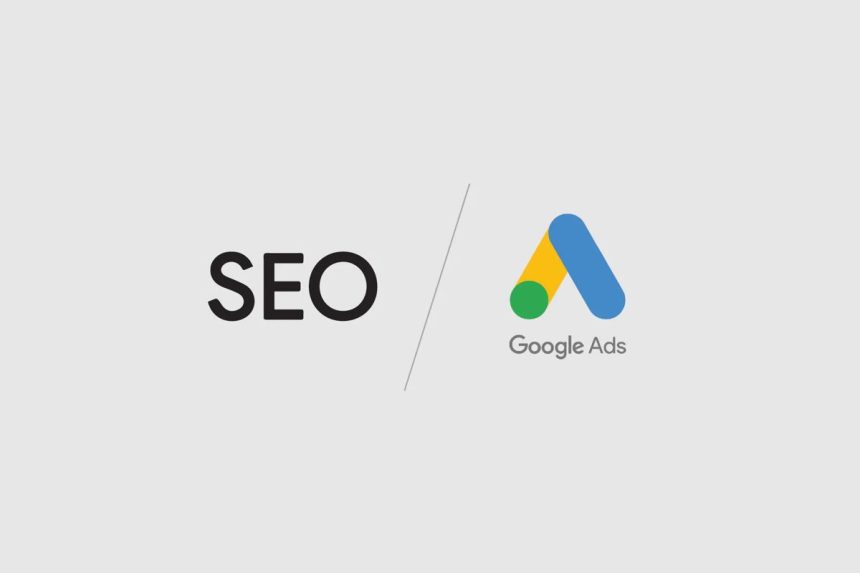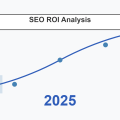Most business owners come to me wanting a simple answer to this question.
But we all wish it were that simple.
After years managing both SEO and Google Ads campaigns for a myriad of different businesses working in various industries, I can say one thing with absolute confidence:
Both SEO and Google Ads have their own unique placement in a robust digital marketing strategy.
We’re now going to dive in and attempt to provide a complete answer on why you may end up choosing one approach out of the two — or why you might have to explore a combination of both to get the results you want.
Your Choice Between SEO And Google Ads
Here’s a quick answer: It depends.
I know; that’s a frustrating answer that doesn’t really answer anything. So let’s explore what it depends on.
- Your unique business objectives
- Marketing budget and limitations
- Timeline for specific goal achievement
- Market competition
- Current online presence
Key Differences: SEO vs Google Ads
SEO and Google Ads differ in a multitude of ways, in terms of urgency of result achievement, cost your business can work with without sinking, and many more. Let’s explore the first two because they’re definitely the most important for goal setting and strategy building.
Timeline Realities
SEO:
- May take 3-6 months to deliver preliminary initial results
- Requires time to builds significant momentum
- Results compound over time
- Focused on long-term growth and value
Google Ads:
- Provide instant visibility
- Can deliver immediate traffic increase
- Greater insights, testing, and modification capability
- Immediate market presence
Cost Structures
SEO:
- Greater upfront cost/investment
- Lower long-term costs
- Ongoing maintenance is required for optimal results
- Value will appear and compound over time
Google Ads:
- Immediate cost incurred per click
- Requires consistent ongoing investment
- Budget flexibility and ability to set limits
- Clear identification of cost per client/customer acquisition
When to Choose SEO
Let’s look at which scenarios and conditions would make SEO your best best for your business. SEO delivers the best ROI in the following cases:
Long-term Business Models
SEO will be the perfect choice for businesses that have stability within their industry, and will probably stay in business for years to come. The compound effect of SEO results make it extremely high-value for well-established business such as:
- Professional services (law firms, accountants)
- Healthcare providers
- Educational institutions
- Established local businesses
High Customer Lifetime Value
For some businesses, every customer that comes through the door has the capacity to be a source of significant revenue over time. For such businesses, the high upfront cost associated with SEO makes it an investment worth making.
For example:
- A law firm where cases might be worth thousands
- A landscaping company getting ongoing maintenance contracts
- Educational institutions with multi-year enrollments
When to Choose Google Ads
There are instances when choosing Google Ads becomes a no-brainer. Google Ads’ capacity for instant traffic generation and fast results make it the leading choice in instances where there are:
Time-Sensitive Needs
- New business launches requiring immediate traffic
- Seasonal promotions that need to availed quickly
- Event marketing to grab prompt attention
- Limited-time offers that require fast response
Specific Conversion Goals
- E-commerce sales targets
- Lead generation campaigns
- Product launches require hype and attention
- Testing new markets for quick insights and results
Real Cost Comparison
Most of our clients need a quick breakdown of costs so they can make highly profitable business decisions. Let’s take a look at some realistic examples that will set better cost expectations:
SEO Investment Structure
First 6 months:
- Setup and optimization: $1,500-3,000
- Monthly maintenance: $1,000-2,500
- Content creation: $500-1,500/month
- Total 6-month investment: $9,000-21,000
Long-term return:
- Diminishing monthly costs
- Consistent increase in organic traffic
- Steady growth in conversion rates
- Compounding value
Google Ads Cost Structure
Monthly breakdown:
- Ad spend: $500-5,000+
- Management fees: 10-20% of ad spend
- Landing page optimization: $200-500
- Ongoing testing: Built into management
Combining Both: The Smart Approach
Iff we talk about how we usually get businesses the results they have always dreamed of, let’s dive into a battle-tested strategy I often recommend:
Short-term (Months 1-3)
- Grab instant visibility with Google Ads
- Simultaneously start implementing the basics of SEO
- Research and test keywords — and look at conversion rates
- Gather market data to fuel future campaigns
Medium-term (Months 4-6)
- Scale the most successful Google Ads campaigns
- Implement an awesome SEO content strategy
- Optimize the strategy based on Ads data and insights
- Build an organic presence
Long-term (Months 7+)
- Reduce Ad spend in strong organic areas
- Focus Ads on high-competition terms
- Leverage SEO data to optimize Ads
- Create synergy between both channels
Decision Framework: SEO vs Google Ads
When you’re really looking into finalizing what the perfect choice is for your business, look at the following factors:
Budget Considerations
Available monthly budget:
- Under $1,000: Focus on SEO fundamentals
- $1,000-3,000: Choose one channel
- $3,000+: Consider a combination approach
Timeline Requirements
Immediate needs:
- Business launch: Google Ads
- Brand building: SEO
- Both: Split budget 70/30
Strategy Recommendations
For a new business, strategy can look like this:
Month 1-3:
- 80% Google Ads
- 20% SEO foundations
- Focus on data collection and insight gathering
- Test market response
Months 4-6:
- 60% Google Ads
- 40% SEO development
- Dive into creation of incredible content
- Optimize your campaigns based on data
Months 7-12:
- 40% Google Ads
- 60% SEO investment
- Scale exactly what works — utilize data
- Build long-term assets
If you’re an established business, this strategy can deliver great results:
Initial Phase:
- Audit current market position
- Identify areas that can deliver quick wins
- Set baseline metrics
- Strategically plan resource allocation
Implementation:
- Balance both channels based on data
- Focus on ROI metrics
- Test and optimize
- Focus on scaling successful elements
Measuring Success for SEO is paramount; here’s how to track:
Look at:
- Organic traffic growth
- Keyword rankings
- Conversion rates
- Domain authority
- Google Ads Metrics
Monitor:
- Click-through rates
- Cost per click
- Conversion costs
- Quality scores
Mistakes to Avoid
SEO Mistakes
- Expecting fast results
- Neglecting technical foundations that will ultimately deliver long-term value
- Inconsistent effort
- Poor content quality that doesn’t deliver value
Google Ads Mistakes
- Insufficient budget allocation
- Poor keyword research
- Weak and non-specific landing pages
- Inadequate testing and data collection
Future-Proof Your Strategy
SEO Considerations
- Core Web Vitals
- Mobile SEO optimization
- Prioritize user experience
- High quality, valuable content
Google Ads Evolution
- Automation improvements
- Smart bidding strategies
- Audience targeting
- Privacy changes
Recommendations for Successful Planning
All my clients know that I believe the best approach to marketing strategy is often a synergized and harmonious combination of both SEO and Google Ads — because both channels deliver completely different results.
Start with Analysis
- Assess current position within the market
- Define and set clear, measurable goals
- Understand resources limitations
- Set realistic timelines that can actually work
Create a Balanced Plan
- Allocate your budget appropriately
- Set channel-specific goals
- Plan for long-term success
- Maintain flexibility
Ongoing Management
- Do not underestimate the power of performance monitoring
- Adjust and modify based on data and results
- Scale and invest whatever is delivering results
- Optimize frequently and expertly
When it Comes Down To it: The Choice Between SEO and Google Ads
Did we finally get an answer to this question?
Well, I believe it’s not a matter of choice at all. You look at the big picture, then zoom in on your specific business needs, and execute accordingly. As we explored above, each of the two channels bring their own set of strengths and weaknesses to the table. Take a look at your expectations from a marketing strategy, and leverage the channel that will deliver the results you need.
Here’s a checklist of what to consider before making a decision:
- Business goals
- Available resources
- Timeline needs
- Competition level
- Target market
Building on both SEO and Google Ads simultaneously usually delivers the best short term and long term results. The most successful marketing campaigns we ever executed were a balanced, well-thought out, and strategically planned mix of both SEO and Google Ads.









